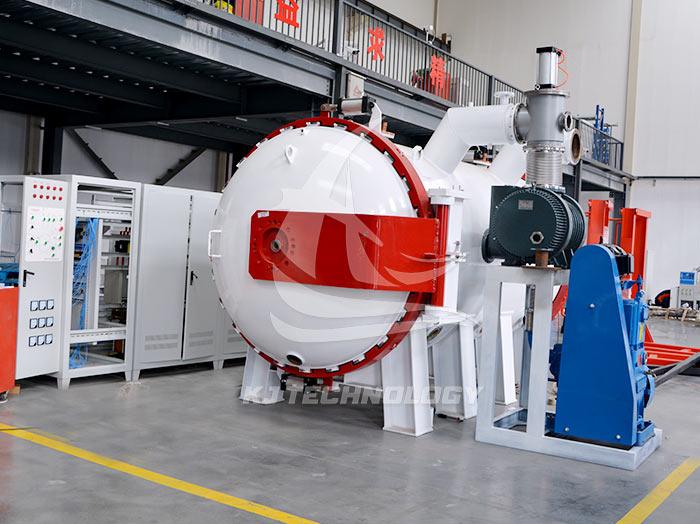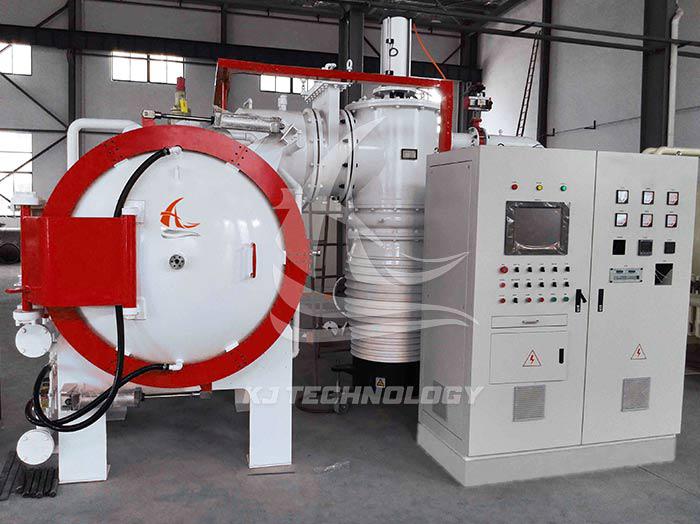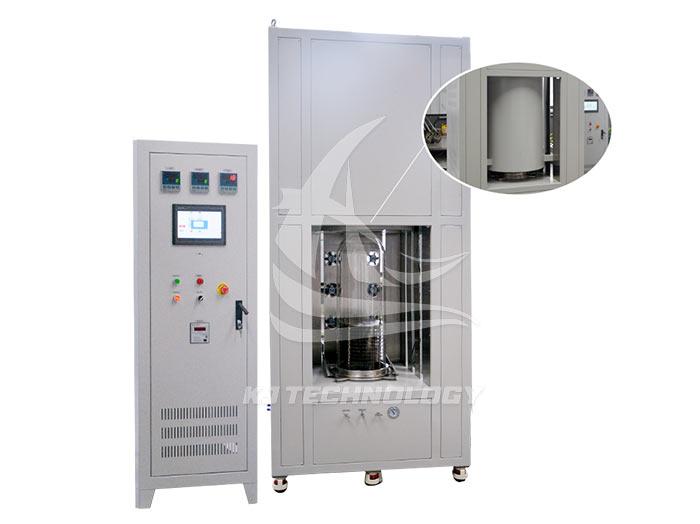Precautions for using a small vacuum furnace for experiments
 10-21-2025 Author: KJ technology
10-21-2025 Author: KJ technology
When using a small vacuum furnace for experiments, strict control should be exercised from four aspects: operating standards, safety protection, equipment maintenance, and emergency response to ensure experimental effectiveness, equipment lifespan, and personnel safety. The following are specific precautions:
1. Operating standards
Loading and Placement
Avoid contact: The workpiece should maintain a safe distance (usually ≥ 50mm) from the furnace wall and heating element to prevent local overheating or short circuits.
Uniform distribution: Workpieces should be placed in a dispersed manner to avoid uneven heating or gas flow obstruction caused by stacking.
Cleaning treatment: Before loading, the surface of the workpiece should be thoroughly cleaned of oil stains and oxide scales to prevent contamination of the furnace environment.
Vacuum pumping and inflation
Staged pumping: First, use a mechanical pump to pre pump to a low vacuum (such as ≤ 20Pa), then switch to a molecular pump to pump to a high vacuum (such as ≤ 10-3Pa), to avoid direct high vacuum pumping causing equipment overload.
Gas purity control: When filling protective gases (such as Ar, N ₂), it is necessary to ensure that the gas purity is ≥ 99.99% to prevent impurities from affecting the experimental results.
Flow regulation: When inflating, the valve should be slowly opened to avoid damage to the furnace structure caused by airflow impact.
temperature control
Step heating: Set segmented heating programs according to material characteristics (such as ≤ 10 ℃ per minute) to prevent thermal stress from causing workpiece cracking or furnace damage.
Insulation time: Adjust the insulation time according to the thickness of the workpiece (such as 30 minutes for 2mm steel plate) to ensure sufficient transformation of the organization.
Cooling rate: Rapid cooling (such as oil cooling) can refine grains, but the cooling rate needs to be controlled (such as ≤ 100 ℃/min) to avoid deformation caused by rapid cooling.
2. Security protection
Electrical safety
Grounding protection: Ensure reliable grounding of equipment, regularly check the insulation performance of electrical circuits, and prevent leakage and electric shock.
High voltage warning: The power supply voltage is high, and insulated gloves should be worn during operation. It is forbidden to touch live parts.
Emergency stop device: Familiarize yourself with the position of the emergency stop button and immediately cut off the power in case of abnormal situations.
Gas safety
Explosion proof measures: When using flammable gases such as hydrogen, explosion-proof devices should be equipped, and the exhaust gas should be treated by catalytic combustion or alkaline absorption.
Ventilation requirements: The experimental area should maintain good ventilation, and operations involving toxic gases such as ammonia should be carried out in a fume hood.
Gas cylinder fixation: Gas cylinders need to be fixed with chains or brackets to prevent tipping and leakage.
personal protection
Protective equipment: Wear protective goggles, heat-resistant gloves, and gas masks during operation (such as when handling toxic gases).
High temperature warning: The surface temperature of the furnace can reach several hundred degrees Celsius. Special tools should be used for sampling to avoid burns.
3. Equipment maintenance
routine inspection
Vacuum system: Regularly check the oil level, belt tightness, and sealing of the vacuum pump, and replace deteriorated oil.
Cooling system: Confirm that the water level and pressure of the chiller are normal, clean up impurities in the water circuit, and prevent blockage.
Furnace structure: Check the elasticity of the sealing tape, cleanliness of the observation hole, and flexibility of the lever handle.
regular maintenance
Heating element replacement: Check the aging condition of the heating element every 6-12 months according to the frequency of use, and replace any broken or severely oxidized components in a timely manner.
Thermocouple calibration: Calibrate the accuracy of thermocouples annually to ensure accurate temperature measurement.
Cleaning inside the furnace: Clean the residue inside the furnace after each experiment to prevent corrosion of the furnace body or affecting the next experiment.
Long term discontinuation
Dry storage: During the shutdown period, the furnace should be kept dry and protected with nitrogen gas to prevent components from rusting due to moisture.
Regular power on: Short term power on every month (such as 30 minutes) to dispel moisture and extend equipment life.
4. Emergency response
Vacuum leakage
Immediate shutdown: Close the gas source valve and evacuate personnel to a safe area.
Check for leaks: Use soapy water or a leak detector to locate the leaking area, repair it, and then vacuum it again.
fire accident
Cut off power: Immediately turn off the intermediate frequency power supply and gas source valve.
Fire extinguishing measures: use dry powder fire extinguishers to put out the fire. Do not use water or foam fire extinguishers (easy to conduct electricity or expand the fire).
Equipment failure
Record phenomenon: Detailed record of fault manifestations (such as abnormal noise, temperature fluctuations).
Professional maintenance: Contact equipment suppliers or professional maintenance personnel, and do not disassemble core components on your own.








